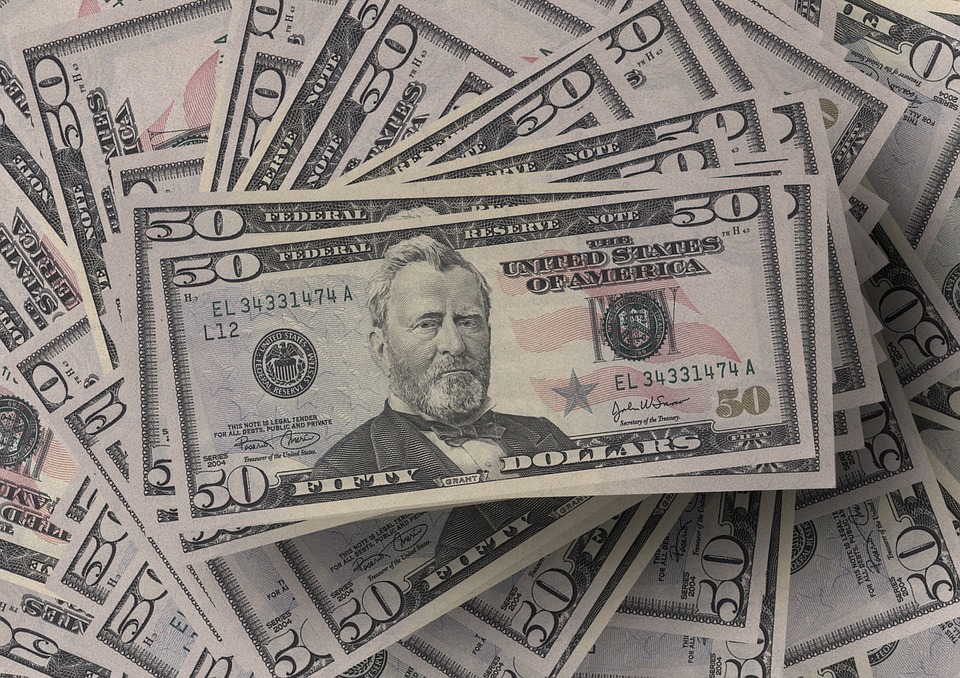Following the meeting on May 1, the Federal Reserve Committee of the US Federal Reserve maintained the key rate in the range of 2.25–2.5%. At the same time, the interest rate on excess (above-standard) reserves of banks was reduced slightly - by five basis points, to 2.35%. This was done in order to shift the effective borrowing rate closer to the middle of the target range. Fed Chairman Jerome Powell called the adjustment technical, adding that it is not a sign of easing monetary policy. In general, the tone of his speech following the meeting turned out to be quite tough - despite the fact that the day before President Donald Trump recommended the regulator to reduce the key rate by 1% and return to the practice of quantitative easing.
The Fed still estimates the growth rate of the US economy as “confident” (in the first quarter, the US GDP increased by 3.2% year-on-year). Higher growth rates can primarily be explained by to the positive contribution of net exports. Supplies from the United States for the quarter increased by 3.7%, but imports declined by as much (many importers increased purchases at the end of 2018 in preparation for the increase in duties on deliveries from China). Earlier, Donald Trump announced that he intends to raise duties on a number of Chinese goods from 10% to 25% on May 10. This will affect imports to the US from China by $ 200 billion; the measure was previously postponed by Washington until the end of negotiations with Beijing.
The level of government spending, which increased by 2.4% due to new investments in infrastructure, was also high. At the same time, consumption growth in the USA slowed down more than twice and amounted to only 1.2%, while investments grew only by 2.7% against 5.4% in the fourth quarter of last year. The dynamics of the labor market turned out to be more positive again - employment growth amounted to 263 thousand places (an increase of 150 thousand is considered sufficient), and the unemployment rate dropped from 3.8% to 3.6% - to the minimum since 1969. At the same time, wage growth remains moderate - it was 0.2% for the month, and 3.2% for the year.
At the same time, the Fed noted in its statement that inflation (excluding energy and food prices) has decreased and remains below the target of 2%. In March, the figure was 1.6% (1.7% in February, and 2% in December of the last year).
Capital Economics expects the Fed's base rate to be lowered before the end of this year. Even with a sufficient increase in consumption in the second quarter, a less positive trend in other indicators will lead to a slowdown in quarterly GDP growth to 1.7%, the center believes. ING Bank points out that although the market builds in expectations for rates, there is actually no need for it. A further reduction in unemployment will support income growth, as competition for labor resources will rise. This will lead to an increase in consumption, which will compensate reduction in stocks and net exports and put pressure on inflation - as a result, the Fed’s monetary policy will remain unchanged, the bank expects.
source: capitaleconomics.com
The Fed still estimates the growth rate of the US economy as “confident” (in the first quarter, the US GDP increased by 3.2% year-on-year). Higher growth rates can primarily be explained by to the positive contribution of net exports. Supplies from the United States for the quarter increased by 3.7%, but imports declined by as much (many importers increased purchases at the end of 2018 in preparation for the increase in duties on deliveries from China). Earlier, Donald Trump announced that he intends to raise duties on a number of Chinese goods from 10% to 25% on May 10. This will affect imports to the US from China by $ 200 billion; the measure was previously postponed by Washington until the end of negotiations with Beijing.
The level of government spending, which increased by 2.4% due to new investments in infrastructure, was also high. At the same time, consumption growth in the USA slowed down more than twice and amounted to only 1.2%, while investments grew only by 2.7% against 5.4% in the fourth quarter of last year. The dynamics of the labor market turned out to be more positive again - employment growth amounted to 263 thousand places (an increase of 150 thousand is considered sufficient), and the unemployment rate dropped from 3.8% to 3.6% - to the minimum since 1969. At the same time, wage growth remains moderate - it was 0.2% for the month, and 3.2% for the year.
At the same time, the Fed noted in its statement that inflation (excluding energy and food prices) has decreased and remains below the target of 2%. In March, the figure was 1.6% (1.7% in February, and 2% in December of the last year).
Capital Economics expects the Fed's base rate to be lowered before the end of this year. Even with a sufficient increase in consumption in the second quarter, a less positive trend in other indicators will lead to a slowdown in quarterly GDP growth to 1.7%, the center believes. ING Bank points out that although the market builds in expectations for rates, there is actually no need for it. A further reduction in unemployment will support income growth, as competition for labor resources will rise. This will lead to an increase in consumption, which will compensate reduction in stocks and net exports and put pressure on inflation - as a result, the Fed’s monetary policy will remain unchanged, the bank expects.
source: capitaleconomics.com





